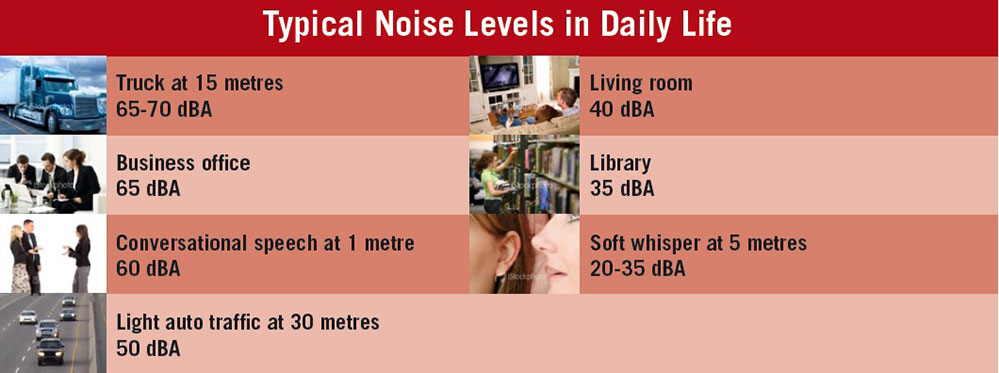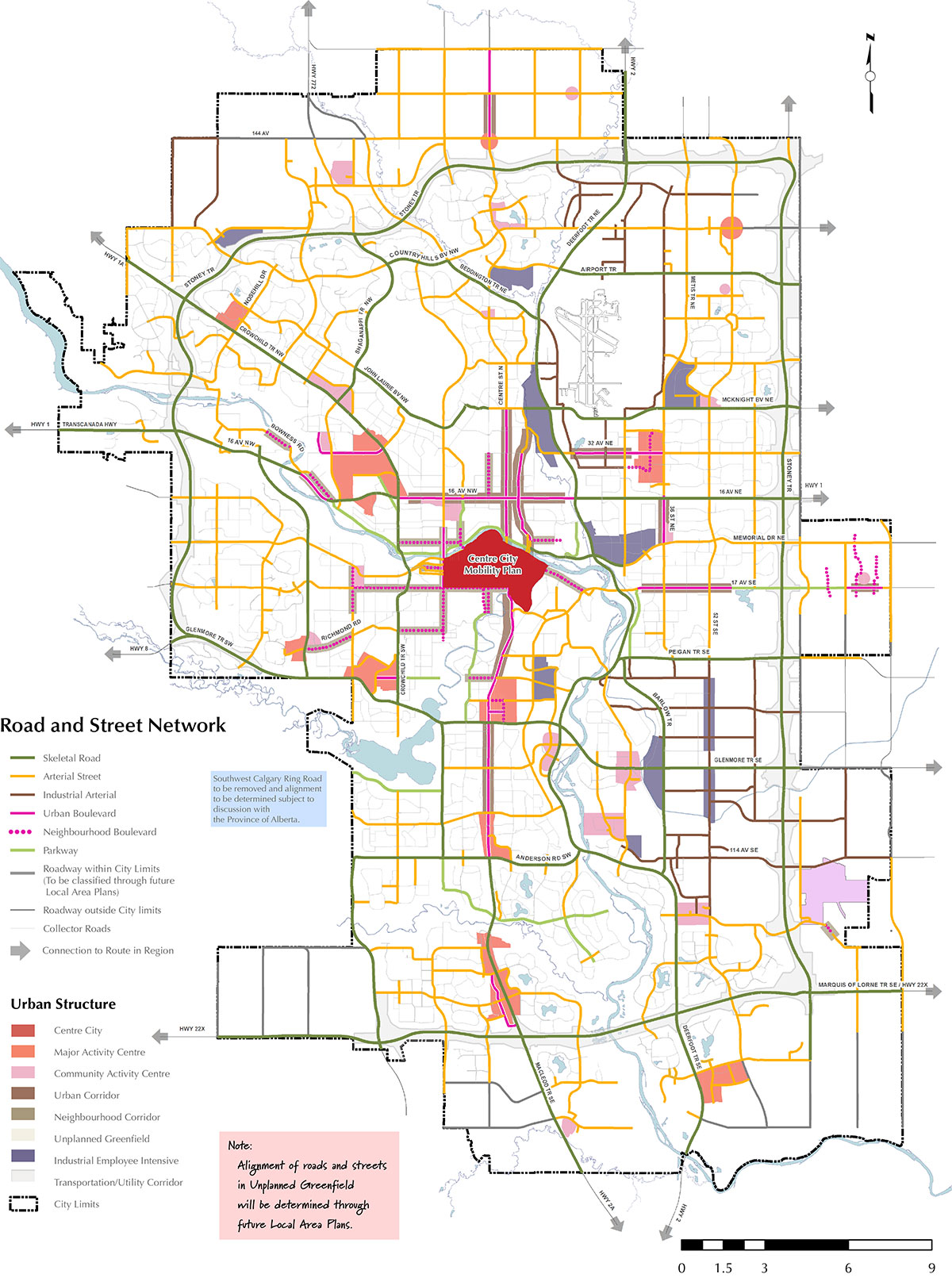Noise Barrier Retrofit program
Program update
2023 – 2026 Project priority list completed
The Noise Barrier Retrofit Program (NBRP) project list has been updated to include newly identified locations that exceed The City’s design noise level criteria. Locations from the previous priority list where noise barriers did not get constructed remain on the list.
Locations have been ranked in order of priority based on the severity of the noise, amount of noise reduction required, cost of attenuation, and number of homes that exceed the criteria.
Recently, Council approved funding for the Noise Barrier Retrofit Program. The project team is currently in the process of creating a construction plan for the 2024 - 2026 projects.
Noise Barrier requests
Requests are individually reviewed within fourteen days. Any requests deemed eligible for the program will become candidate projects and be added to the annual noise measurement list.
What information is required to complete the noise barrier request?
- Name, address, phone number or email address.
- A signed petition with 2/3 support for the noise barrier from residents directly impacted from transportation noise.
Download the full list of noise barrier locations that have been measured to warrant a noise barrier adjustment. This spreadsheet offers filtering by Community and Ward in addition to the data in the search above.
Submit a request
If you would like to request a noise barrier, make modifications to an existing noise barrier, or would like a traffic noise assessment completed, fill out a request form below:
About the program
Transportation noise – as in the sounds generated by vehicles operating on a roadway – is heard and expected when roads are located next to a populated area. As Calgary continues to grow and densify, more vehicles are occupying the roadways increasing the amount and level of transportation noise heard in residential communities.
The City of Calgary is committed to reducing the impact of transportation noise heard in residential areas through the Noise Barrier Retrofit Program (NBRP). Where residential areas next to an eligible roadway exceed The City’s design noise level criteria, a noise barrier may be constructed. Though new and existing residential communities across Calgary are eligible for this program, noise barriers are typically most warranted in older communities.
A project priority list is updated approximately once every three years. Construction of a qualified noise barrier is subject to fund availability and the technical and economic feasibility of construction. Noise barriers are constructed at the highest priority locations when funding is available.
Surface Transportation Noise Policy
The NBRP is guided by The City’s Surface Transportation Noise Policy. The policy prescribes the conditions under which noise barriers are constructed next to residential properties using guidelines established by the federal government.
If a noise barrier is deemed necessary, they are constructed in one of three ways:
-
1. By a land developer
at the onset of a new community subdivision.
-
2. By The City
when a roadway next to an existing residential community is being upgraded.
-
3. Qualification
when an area qualifies under the Noise Barrier Retrofit Program.
What are the key elements of The Surface Transportation Noise Policy?
- The City of Calgary’s Surface Transportation Noise Policy defines the conditions under which noise barriers are constructed adjacent to residential properties using guidelines established by the Federal Government.
- The Policy only deals with noise generated from typical traffic passing by a location - it does not deal with noise sources such as aircraft noise, engine retarder braking, or construction activities.
- The Policy provides for relief due to excessive noise impacts for the rear outdoor recreation area of a residential property only. Noise levels experienced within the dwelling or building are not relevant to this Policy.
- The Policy applies to existing residential community directly adjacent to a skeletal road, arterial street, or parkway, as per The City of Calgary’s roadway classification.
- If the roadway is a non-truck route, the threshold traffic noise level is 60 (dBA), based on a 24-hour average. If the roadway is a truck route, the threshold noise level is 65 (dBA), based on a peak hour noise level.
- Sound attenuation walls are constructed in three ways:
- Since 1988, new residential sub-division developers have been required to evaluate the need for noise walls at the time the development occurs, and where deemed necessary, provide a wooden or stucco-faced fence of an appropriate height.
- If The City upgrades a roadway adjacent to existing residential development, the need for sound attenuation is reviewed and provided if deemed necessary.
- For existing residential areas, The City has established a program (Noise Barrier Retrofit), with a limited annual budget, to construct concrete sound attenuation walls, on a priority basis, for locations deemed to be impacted the worst by adjacent traffic noise.
Glossary
Skeletal road: Roads that promote the movement of vehicular traffic over long distances and move over 30,000 vehicles per day. They operate at high speeds and have limited direct access and interaction with adjacent land uses.
Crowchild Trail and Glenmore Trail are Skeletal Roads.
Arterial street: Roads that provide a reasonably direct connection between communities and major destinations moving between 10,000 – 30,000 vehicles per day. They make up much of the Primary Transit Network in Calgary.
Bow Trail is an Arterial Street.
Parkways: Parkways focus on integration with natural areas such as parks, waterways, or public institutions.
Memorial Drive is a Parkway.
Design noise level criteria
- Noise that is generated solely from typical vehicle traffic passing by a location. Areas experiencing noise from other sources such as airplanes, engine retarder brakes or construction activities do not qualify.
- Non-Truck Route – where the traffic noise level exceeds 60 decibels, over a 24-hour average.
- Truck Route – where the traffic noise level exceeds 65 decibels, during the peak hour.
- The location must be in an existing residential community directly adjacent to a skeletal road, arterial street, or parkway, as per The City of Calgary’s roadway classification.

Frequently asked questions
Noise Barrier Retrofit Program
How much money is allocated to the Noise Barrier Retrofit Program?
Council has approved and allocated $12 M for the construction of noise barriers on the 2024-2026 Noise Barrier Retrofit Program project list.
Currently, how many candidate projects are on the priority list?
The 2023 – 2026 project list contains 11 priority areas eligible for construction for 2024-2026.
Where is the Noise Impact measured?
Truck Routes
- Standard Lot – Noise levels are measured 3 meters from the house at a height of 1.5 meters above ground.
- Walk-Out Style Lot (built after 1996) – Noise levels are measured at a height of 1 meter above the centre of the main floor deck.
Non-Truck Routes
All homes are measured 3 meters from the house at a height of 1.5 meters above the ground.
How are noise studies conducted?
The program is a citizen-led initiative where individuals may request the assessment of noise levels at their property. The first step to initiate a noise measurement is through a 3-1-1 inquiry or an online request.
If a location qualifies for noise measurement, a traffic noise investigation request form is sent to affected property owners. The request form must be supported by two-thirds of those directly impacted. All eligible complaints and enquires are investigated to determine if they meet the criteria for the Noise Barrier Retrofit Program list.
What information is required to complete the noise barrier request?
Name, address, phone number or email address.
A signed petition with 2/3 support for the noise barrier from residents directly impacted from transportation noise.
What are the steps for a noise barrier investigation?
- A request form is submitted by a resident (with two-thirds support from impacted households).
- An initial site visit is made to establish the feasibility of the sound attenuation wall construction.
(Note: issues such as lot flankage, frontage, access points, sight lines, relative grade, accessibility, and distance from the roadway will be assessed).
- Once feasibility has been established, the location is then added to the annual list for detailed field measurement and traffic count in the subsequent year.
- From June to September each year, noise field measurements and traffic counts are conducted at each location on the list.
- After the required testing has been completed, the data is evaluated to determine eligibility under the Surface Transportation Noise Policy. The result of the evaluation is then communicated to the affected parties.
- The locations that qualify under the program are retained on file for detailed evaluation, benefit/cost calculation, and prioritization assessment.
- When the prioritization list is established and timelines are confirmed, a survey is sent to impacted residents to ensure that there is a minimum of two-thirds support for the construction of a noise attenuation wall.
- An Open House is held to inform neighbours and communities.
- The noise barrier is constructed.
How are priority locations ranked?
Priority locations are ranked according to the expected benefit/cost ratio of the project. The benefit/cost ratio is a consistent formula for evaluating and prioritizing candidate locations. The highest ranking goes to the location with the highest benefit/cost ratio. Factors taken into consideration include:
- The severity of the noise problem.
- The amount of noise reduction required.
- The cost of the project.
- The number of residential homes that will benefit.
What type of wall will be constructed?
Noise barrier retrofit projects are placed on tender and the type of wall is determined by the contractor completing the work.
What if I don’t want a wall?
A noise barrier can only be constructed under the NBRP program if two-thirds of the directly impacted property owners support the project.
The initial request must be accompanied by a list of homeowners who support the request. Before construction begins, a final poll will be taken to ensure two-thirds support remains.
Noise Barriers
Will a noise barrier eliminate traffic noise?
A noise barrier will make a significant difference lessening the impact of transportation noise.
A noise barrier can achieve a 5-decibel noise level reduction when it is tall enough to break the line-of-sight from the roadway to the receiver location.
After the line-of-sight is broken, an additional 1.5 decibel noise level reduction can be achieved per one meter of barrier height.
My existing fence has gaps in it. Do gaps in the fence affect its ability to block noise?
A higher level of sound protection is achieved when fences have no gaps.
How is noise attenuation considered for new community subdivisions?
At the onset of a new community development next to a skeletal road, arterial street, or parkway, The City works with land developers to project the future transportation noise. If noise is expected to exceed the design noise level criteria, a noise barrier will be constructed.
Qualifying for the Noise Barrier Retrofit Program
Why do some locations not qualify for a noise barrier?
It may not be feasible to construct a barrier at all locations due to physical restrictions and/or the cost of construction. Additionally, a noise barrier may not significantly reduce noise levels in all cases.
I already have a fence that was constructed by a developer. Am I eligible for this program?
Any property owner who believes they have a noise problem can submit a request and apply for a noise barrier through the NBRP program.


